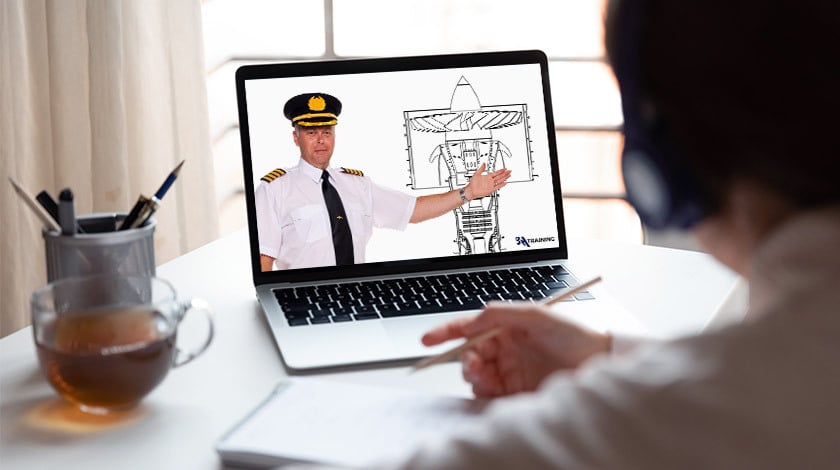Photo: shutterstock.com
Reading Time: 3 minutesOnline training has been on the rise lately due to the circumstances the worldwide pandemic has put us all in. Approved training organizations (ATOs) must have walked a more winding road than other academic institutions and businesses to start training their students remotely as it was subject to CAA’s approval in the first place. In any case, ATOs with a clear vision and the right tools in place have successfully implemented the new order, and distant learning is a “new normal” now for their pilot students. But how efficient is it compared to traditional face-to-face practice? Agata Pradedovic, Head of Ab Initio Ground School at BAA Training, shared her views and observations on the subject.
IBM has found that participants learn five times more material in online learning courses using multimedia content than traditional face-to-face classes. How similar is it to the reality you observe at BAA Training?
I can definitely agree that the virtual space provides more possibilities to integrate a wider variety of multimedia materials, making lectures more informative. Traditional paper books, text, and other written material have been replaced by interactive forms online that can be seen, heard, or read, thus engaging more senses.
One of the BAA Training Theoretical Knowledge Instructors (TKIs) has even managed to lead an excursion over the building and show students aircraft parts and aviation-related equipment. It is not that easy to organize such tours in person for a big group of students.
Does a “no travel” requirement give an added value, or is it merely a “nice to have”?
Pilot training is an intense endeavor, and once they start, they quickly realize that every minute is worth its weight in gold (especially when we talk about ATPL Integrated, e.g.), and learning from home saves them a lot of time they can then use for self-study. Another thing is that online learning helps to cut costs as there is no need to go anywhere physically.
If we develop this topic even further, not only the flying academy’s employees and students benefit from the eliminated travel, but also nature does! According to the Open University in Britain, on average, 90% less energy is consumed, and 85% fewer CO2 emissions occur per student when they learn from home than when they travel to conventional in-class courses.
What are some obstacles instructors face while teaching remotely?
The way an instructor and students communicate with each other inevitably changes as there is no real-life interaction. The general tendency is that students tend to listen quietly when an instructor is delivering a lesson, whereas in class, “active listening” prevails. Also, it is hardly possible for an instructor to take control over what is going on on the other side of the screen and ensure everyone is “on the same page.” Intermittent Internet connectivity problems sometimes also cause unnecessary hustle.
How do instructors overcome the obstacles you mentioned?
To ensure everyone is following, instructors deliberately ask call-out questions, organize separate Q&A sessions, and engage students in a discussion. We also distribute virtual training evaluation forms to determine how students feel about it and what kind of comments or escalations they have. We then enact improvements based on what we learn. Besides, BAA Training holds regular meetings with students and TKIs, during which we use a chance to gather even more information.
What are some advantages of online learning?
Online learning is ideal for Pilot-Controller Communications simulation tasks. As NASA reports, incorrect or inadequate ATC instructions are common factors in more than 30% of approach and landing accidents, so this training is crucial.
Although there are both pros and cons concerning online instructor-led training, it is clear that this training alternative does perform its function and, in many cases, even surpasses the traditional environment’s capabilities. We should also consider that everyone has their learning style (some like learning independently, others prefer to be guided, and some want to direct their pace themselves). A combination of online and instructor-led training caters to different learning preferences and, on this stage, is gradually winning its trust.

